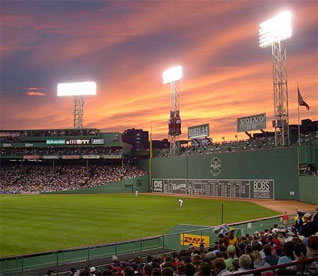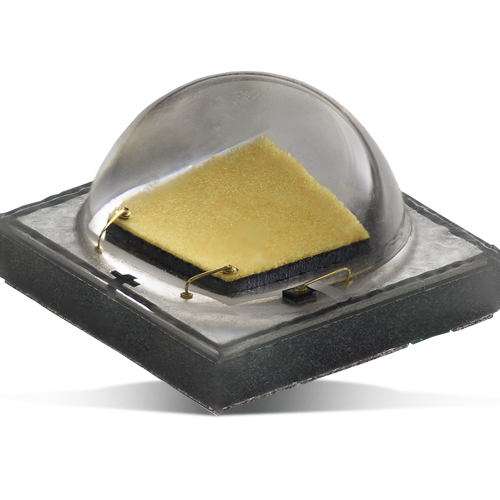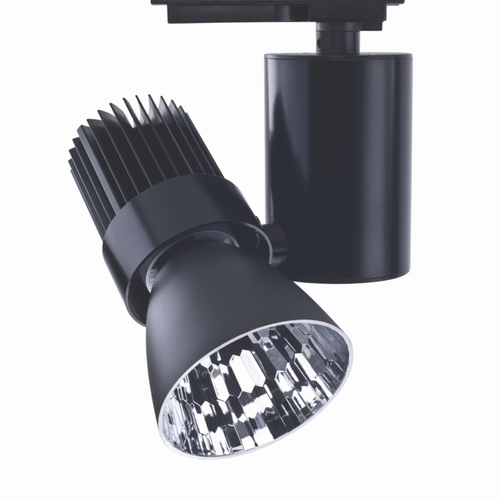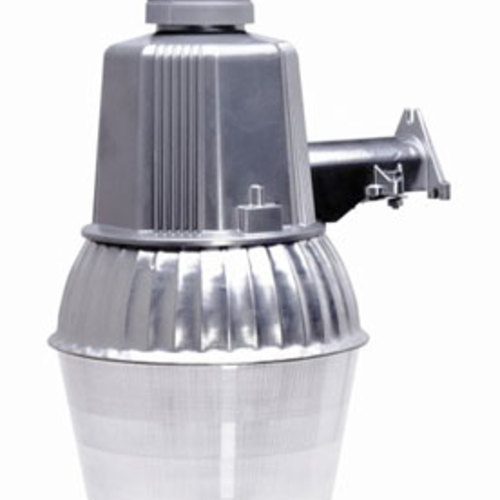
Image Credit: GoBostonCard.com
Three recent columns provided a brief history of lighting, an overview of fluorescent technology, and a look at the challenges of improving streetlights. Following a side trip into the issue of “passive survivability,” I’m returning this week to illumination with an overview of high-intensity discharge (HID) lighting.
HID lighting involves creating an arc of electricity in a sealed bulb containing mercury vapor and other gases. One of the advantages of HID lighting is long lamp life—which is important in outdoor and hard-to-reach indoor applications. Another advantage is the potential for very high light output from a concentrated light source—useful in illuminating Fenway Park, for example. All HID lamps require a ballast to produce the proper electric current to start and then maintain the electric arc. Because of this ballast, most HID lamps take several minutes to turn on (referred to as restrike delay)—which is one of their drawbacks.
There are four basic types of HID lighting:
Mercury vapor is the oldest type of HID lamp and still the most common outdoor lighting in some areas. When new, mercury vapor lamps produce a bluish light, though it yellows (and dims) as the lamps age. The efficacy of mercury vapor lamps is mediocre (20-60 lumens per watt), which is better than incandescent, but not as good as most fluorescent or other HID lamps. Because of the relatively low efficiency of mercury vapor lamps, the Energy Policy Act of 2005 banned their manufacture and sale in the U.S. beginning in 2008. So, as the older mercury vapor lamps in use today fail, they will have to be replaced with other options. As described a couple weeks ago in the story about West Dummerston Village, replacing older mercury vapor lights can be problematic.
High-pressure sodium (HPS) lamps produce a yellowish-orange light (low “color temperature”); these are fairly common along highways. HPS lamps use high-frequency, high-voltage current to ionize xenon gas in a sealed bulb. This process vaporizes a sodium-mercury amalgam, and when an electric arc passes through this gas mixture electrons are released from the sodium atoms, producing the visible light. The efficacy is very high (up to 150 lumens per watt—compared with about 15 for incandescent lamps and up to 100 for the best linear fluorescent lamps). The light quality of most HPS lamps is quite poor, however, with a color rendering index (CRI) of just 20-25, compared with 85 for the best fluorescent lamps and 100 for incandescent light bulbs (a few newer HPS lamps are better, but with an energy performance penalty). This means that colors don’t look natural under HPS light. HPS light output also drops off significantly over time—“lumen depreciation” in tech-speak.
Low-pressure sodium has the highest efficacy of any light source today (up to about 200 lumens per watt) but the light quality is the worst, with a CRI of close to 0. In fact, under the deep-orange low-pressure sodium glow, it’s hard to distinguish a red car from a blue car. Most light sources produce a wide spectrum of light, while low-pressure sodium is limited to a very narrow band—in the orange part of the spectrum. Due to this “monochromatic” nature of the light, astronomers like low-pressure sodium, because they can use filters to block out its light pollution. In towns near astronomical observatories, such as Tucson, Arizona, ordinances are sometimes passed to allow only low-pressure sodium for street lighting.
Metal halide has emerged as the most popular form of HID lighting. Introduced around 1960 as a modification of mercury vapor lamps, metal halide lamps incorporate mercury vapor along with such metal halides as sodium-iodide and thallium-iodide. The result is a reasonable efficacy (50-115 lumens per watt) and much better light quality than other HID light sources, with much whiter light and CRI ratings of 65 to 93. They also will restart more quickly if they are turned off (restrike time of just a few minutes). While the efficacy is lower than that of high-pressure or low-pressure sodium lamps, metal halide light shows off colors much better, so it is often possible to get by with lower total light output, thus achieving savings. The expected lamp life of metal halide lamps (10,000 to 20,000 hours) is lower than that of HPS, some of which are rated at over 30,000 hours.
The light quality of metal halide lamps is good enough to use indoors, and you will commonly see this form of lighting in big-box stores, warehouses, and other buildings with high ceilings—though in these applications, newer T-5 hi-bay fluorescent lighting, which can be turned off and on instantly, is now providing serious competition. Metal halide is also now the outdoor light source of choice along streets, in parking lots, and in sports stadiums.
A big drawback to all HID—plus fluorescent—lighting is the mercury required to produce light. Mercury is a potent toxin, and both the mining of mercury and the disposal of lamps can release the mercury into the environment. Next week we’ll look at LED lighting, a relatively new technology that avoids the mercury.
Weekly Newsletter
Get building science and energy efficiency advice, plus special offers, in your inbox.















0 Comments
Log in or create an account to post a comment.
Sign up Log in